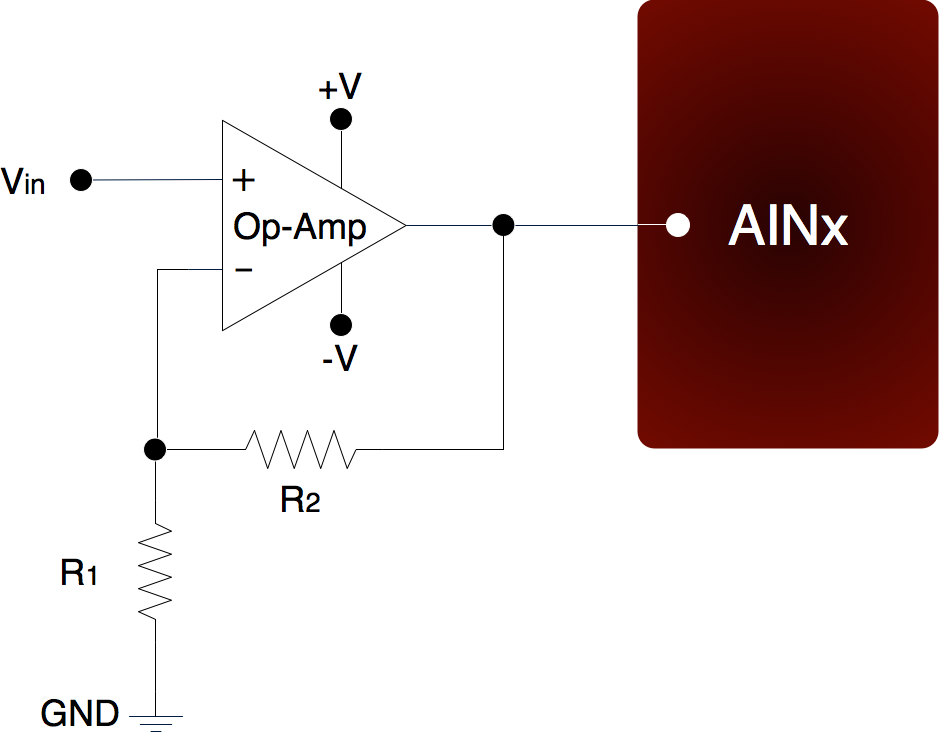Amplifying Small Signal Voltages (App Note)
The best results are generally obtained when a signal voltage spans the full analog input range of the LabJack. If the signal is too small it can be amplified before connecting to the LabJack. One good way to handle low-level signals such as thermocouples is the LJTick-InAmp, which is a 2-channel instrumentation amplifier module that plugs into the U3 screw-terminals.
For a do-it-yourself solution, the following figure shows an operational amplifier (op-amp) configured as non-inverting:

The gain of this configuration is:
Vout = Vin * (1 + (R2/R1))
100 kΩ is a typical value for R2. Note that if R2=0 (short-circuit) and R1=inf (not installed), a simple buffer with a gain equal to 1 is the result.
There are numerous criteria used to choose an op-amp from the thousands that are available. One of the main criteria is that the op-amp can handle the input and output signal range. Often, a single-supply rail-to-rail input and output (RIRO) is used as it can be powered from VS and GND and pass signals within the range 0-VS. The OPA344 from Texas Instruments (ti.com) is good for many 5 volt applications.
The op-amp is used to amplify (and buffer) a signal that is referred to the same ground as the LabJack (single-ended). If instead the signal is differential (i.e. there is a positive and negative signal both of which are different than ground), an instrumentation amplifier (in-amp) should be used. An in-amp converts a differential signal to single-ended, and generally has a simple method to set gain.
